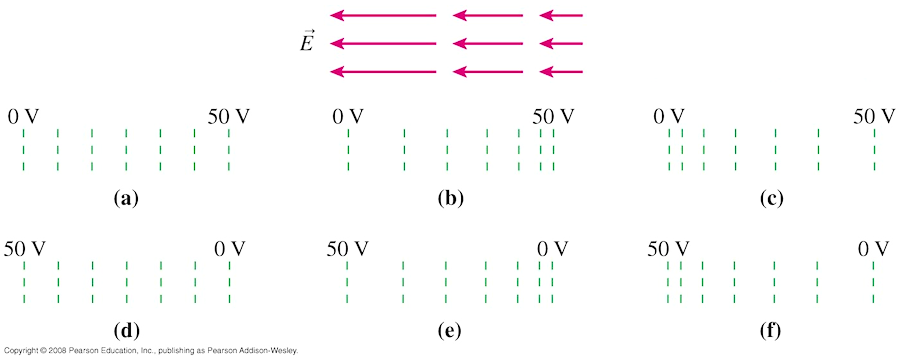- distributed charge example Example #1
- conductors Example #2
- Review concentric shells example Serway PSE6 24.51
A hollow conducting sphere is surrounded by a larger concentric spherical conducting shell.
The inner sphere has charge −Q, and the outer shell has net charge +3Q.
The charges are in electrostatic equilibrium. (a) Using Gauss' law, find the charges and the
electric fields everywhere. (b) Find the electric potential everywhere, assuming V = 0 at r = ∞.

- Review Knight2 problem 29.65
The figure at right shows two uniformly charged spheres. What is the potential difference between points a and b? Which point is at the higher potential? Hint: The potential at any point is the superposition of the potentials due to all charges.
(compare with conducting spheres)

- E points "downhill" on the V "surface"
- E is perpendicular to equipotential lines
- E is the slope of the electric potential function Example #3
- 2-D fields and potential applet:
Example #4
Example #5
End of material on Exam I
- Bring a calculator (no mobile devices allowed) and your prepared 8-½×11 reference sheet
- 6 true/false questions (12 pts)
- 6 multiple-choice questions (18 pts)
- 3 free-response questions, each with multiple parts (70 pts)
Read textbook sections 25-1 and 25-2 before the next lecture







